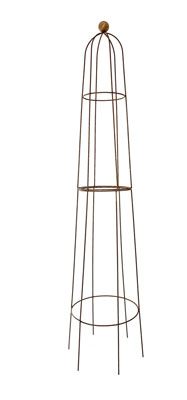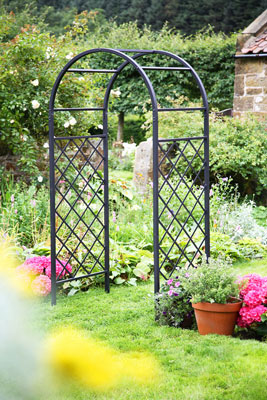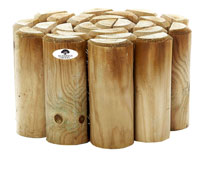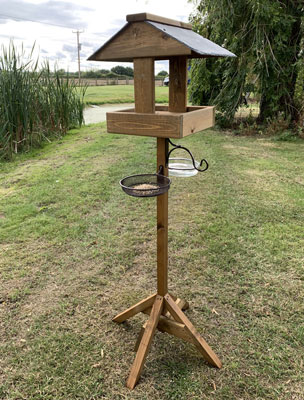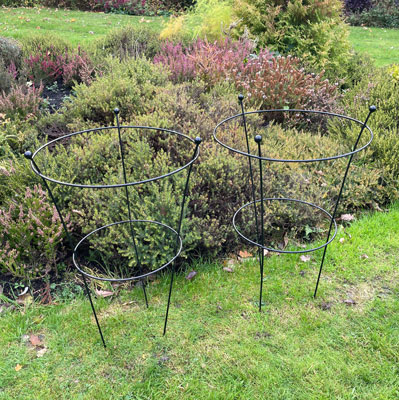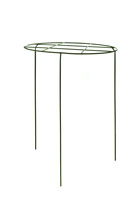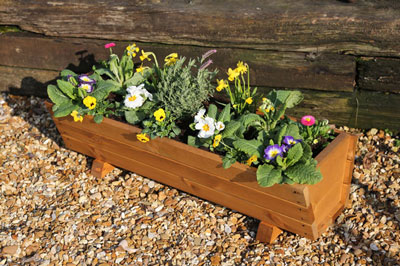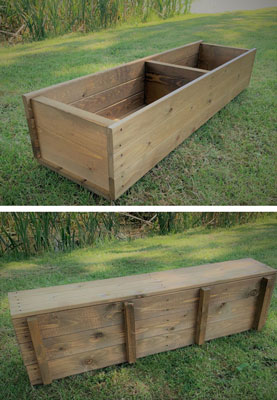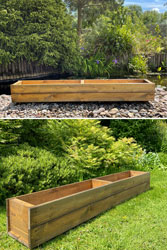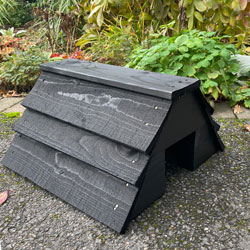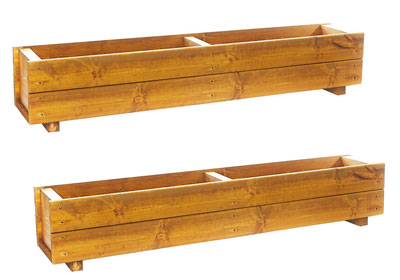Planting Schemes
Garden Compost
Compost is broken down waste vegetation and the process is well understood and much can be done to improve on the basic pile of rubbish that most of us have in a corner of the garden.
The first requirement is for an out of the-way spot as the heap will never be a thing of beauty. Having decided where, the next thing is some sort of containment, in small gardens one of the rotating barrels is probably suitable, but in larger gardens maybe a slatted, three-sided wooden structure is in order, we have three of these as it generally takes us two years to get finished compost. If you can create a roof, that will be good – rain has three bad effects on a compost heap, it will cool it down, it will make the heap too wet, and finally it will wash some of the goodness into the soil below the heap.
If you garden a couple of acres you may just about generate enough material to build a big enough heap that will become hot enough to produce finished compost within a year, but this is not going to be possible on less. As your heap is unlikely to get very hot you should not put seeds onto the heap as they will simply wait their time and start growing when you use the compost.
Obviously lawn mowings, kitchen waste and garden waste will comprise the bulk of the heap, but these on their own will leave the heap deficient in carbon compared to the ideal. The best way to redress the balance is to add as much paper, card and woody bits as possible.
Any manure from hens, hoses, cows, goats and sheep are good as are droppings from mice, hamsters, gerbils and guinea pigs.
Companion Planting\n
Companion plants are plants which bring a benefit to a particular other plant. The best approach is to know which plants do what and then you will be able to best choose the companion plants that will bring most benefit to your particular situation. The following guide attempts to follow this logic - at least to start with!
Aphids, primarily greenfly and blackfly are a particular pest in many gardens, they love broad beans, roses and many other plants. The usual treatment involves the spraying of noxious chemicals which is best avoided on food plants. There are insects which eat aphids, especially ladybird larvae and hoverflies, so attracting these is a beneficial move and many plants will do this perhaps especially eryngiums, buddleia, ajuga, achillea and alyssum. Another approach to defeat these pests is to plant herbs such as summer savoury, mint, chives (and other alliums) and basil which the greenfly and blackfly do not like close to plants which may be attacked. Finally, you can plant nasturtiums close by which the aphids will probably prefer to your other plants - plus you can eat the flowers in your salad, they look good and have an interesting peppery flavour.
Nasturtiums can also be preferred to brassicas by cabbage white butterflies as a place to lay their eggs, thus saving you from the dreaded caterpillars.
Carrot fly can be a big problem. Surrounding your crop by a barrier (fleece, polythene etc) at least 18ins tall is supposed to work, but in my experience not very well. Carrot flies do not like alliums, especially leeks, so you can try planting the two together, mint is supposed to prevent the carrot fly finding the carrots because of its strong scent. It may also help to grow varieties of carrot that are less attractive to carrot fly such as "Flyaway" or "Resistafly".
Marigolds (calendula) and sweet peas are often suggested as companion plants for peas, beans and courgettes as they will attract pollinating insects. Personally, I have never experienced any lack of pollination without this help.
Planting Repetition and Surprise\n
Repetition in a garden border works in two ways. Firstly, unless the plant you are considering is large or very expensive it is often better to plant in drifts, so that you get a decent sized area of each. Drifts are classically an odd number of plants 3, 5 or 7, unless you have a very large area to fill. If funds are tight and only one of each plant is affordable, plan ahead and leave space for the others, filling in the gaps with hardy annuals which will self seed until you have propagated or afforded the other plants you need.
The other way in which repetition should be considered is repeating a plant, or group of plants at intervals up the border. We have a long mixed garden border and I have planted a cardoon and a bronze fennel next to each other, and have repeated this four times. As well as being dramatic contrast, the repetition tends to bring the whole planting scheme together by giving you a reference point every so often.
Surprise is harder to achieve. Usually it depends on something substantially different coming suddenly into view. One example we saw in a previous blog was the clump of bright red tulips in a blue and grey border. Not only was this a surprise but it heightened the awareness of the limited colour scheme of the rest of the planting.
Another way to achieve surprise is to generate a hidden area, by a screen of some sort – plant or otherwise, and then place something different just round the corner; say a statue or sculpture. Surprises can be technical in nature, for instance a motion detector could trigger a noise, a water feature or a lighting effect.
Garden Planting Schemes
There are many considerations to be taken into account if you want truly great plantings. The place to start is the type of garden that you want – do you want the formal and classical or the informality of a cottage garden? Is it to be a town garden or a country garden? , fruit and veg production, or just the appeal of a beautiful garden? Perhaps most important how much time will you want to put into maintenance?
Once you have a scheme in mind, then you can start on design (or re-design), and this is where your planting scheme starts. Where will you have trees and shrubs, and where will you have flower borders?
Once you have fixed the size and shape of the borders then you are ready to consider planting schemes in earnest. Throughout the process you need to bear six things in mind:
(i) Colour
(ii) Plant height and spread
(iii) Season of interest (usually flowering time)
(iv) Texture or form of the plant
(v) Repetition of a plant or group
(vi) Surprise
The success of your planting scheme will largely reflect how well you combine all these aspects. But don’t get too carried away and ignore important things like which plats grow well in the conditions that you have.
Plant Height and Spread
When you decide on a plant that you want always check its eventual size and spread. The height will tell you where to plant it front to back in the border
Start from a point where the tallest plants are at the back of the border and then they range in decreasing height down to the front. This will allow you to see all the plants from any position in the garden (apart from behind the border), but it is also a bit boring! You can use tall plants to generate that bit of unseen mystery which makes people want to go and explore to see that which is hidden. This same objective can also be achieved by screens or curves. In the end I think that tallest to shortest with just a couple of exceptions is best, but do what you think will give best effect.
To some extent you can control plant height by pruning, although if you do this during the growing season you are likely to reduce the number of flowers you get. Having said that, pinching out herbaceous plants early in the season (no later than May) will produce a shorter bushier plant and probably increase flowering.
The eventual spread of the plant will tell you how far apart to plant them. So if you are planting two identical plants that have a spread of 1 metre, then plant them 1 metre apart (they will both grow half a metre towards the other). If you are planting a plant with spread 1 metre next to a plant with 2 metre spread, plant them 1.5 metres apart. Following this plan your plants, when they are mature, will just be touching each other, you will get the best from both, and there will only be small gaps for weeds to grow in. However, if you have less than perfect growing conditions, or your plants are slow to mature, or you are impatient like me, you may wish to plant a bit closer together. I aim at 50% to 75% of recommended distances depending on speed of growth of the plant. So my bed will look mature sooner and there will be less space for weed growth, but on the downside I probably have to spend a bit more time stopping plants encroaching on each other’s space.


